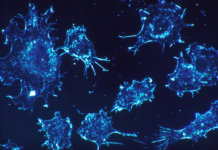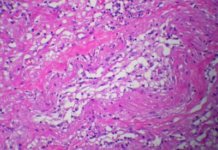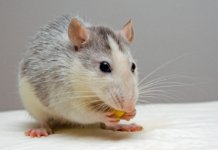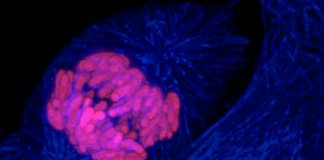Longevity linked to gene copy number variation (CNV)?
Is longevity related to variability in the number of copies of a gene?
Aging is associated with cellular and chromosomal changes. These are achieved by multiple mechanisms, including duplications and deletions of a chromosome segment, involving or not a gene or part of a gene. The general term for this process is copy number variation (CNV). It is a very common polymorphism that increases with age. Variations in the copy number of a gene can change the structure of the gene, affecting its expression and an individual’s phenotype[1]. This phenomenon is involved in the development of pathologies such as autism spectrum disorders[2], Huntington’s disease[3] and diabetes, or participates in the genomic instability found in cancer cells[1].
Studying the variability of the copy number of a gene
To study variations in the number of copies of a gene in a population, a genome-wide association study (GWAS) is required. It consists of the analysis of entire genomes of a large population to identify all genomic variations and correlate them with observed phenotypic traits. Through genome-wide analyses, scientists have recently associated CNVs with aging[4], lifespan[5] and age-related mortality[6] and have thus highlighted an association between CNVs and longevity.
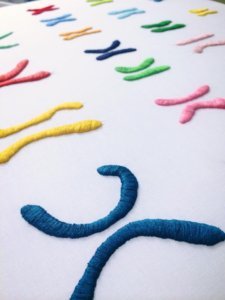
The latest genome-wide study exploring the association between NVCs and longevity[1] was conducted on a Chinese cohort of 4007 people of Han ethnicity. This cohort was divided into two groups: individuals aged 90 to 117 and younger individuals aged 30 and 65. The study identified 11 NVCs strongly associated with longevity. Of these, 4 partially covered VCNs found in long-term Danish and US populations, while the remaining 7 had never been reported[1]. Moreover, in the genomic regions identified and showing CNV, the study found genes influencing telomere shortening and cancer risk, among others[1]. Finally, a decrease in the number of pro-cancer gene copies and signalling pathways involved in aging has been observed in healthy elderly individuals. These results showed that the number of VCNs, mainly deletions of genomic segments, increased significantly with age and were directly correlated with longevity[1].
Gene copy number variability and longevity
This study therefore identified areas of CNV associated with longevity, as well as the genes and pathways affected. It should be noted that this is a genome-wide study conducted on a Chinese ethnic group, so we cannot attribute these results to a population of different origin, for obvious reasons of genetic differences between ethnic groups. Nevertheless, it is possible to compare data from separate genome-wide studies of different populations. Finally, these results are consistent with the conclusions of other studies on the existence of a correlation between longevity and variations in the number of copies of certain genes. Longevity is a complex trait with an important genetic component[2]. This study suggests that VNCs are significant contributors to the genetic component of human longevity[7] and points to the value of furthering knowledge about age-related VNCs in the fight for longevity and against aging.
References :
[1] Zhao et al. The correlation of copy number variations with longevity in a genome‐wide association study of Han Chinese, AGING 2018, Vol. 10.
[2] E. Shishido et al. Psychiatry and Clinical Neurosciences 2014; 68: 85–95
[3] Angelica Vittori, Carlo Breda, Mariaelena Repici, Michael Orth, Raymund A.C. Roos, Tiago F. Outeiro, Flaviano Giorgini, Edward J. Hollox and the REGISTRY investigators of the European Huntington’s Disease Network, Copy-number variation of the neuronal glucose transporter gene SLC2A3 and age of onset in Huntington’s disease. Human Molecular Genetics, 2014, Vol. 23, No. 12 3129–3137 doi:10.1093/hmg/ddu022
[4] Leonid Iakoubov, Malgorzata Mossakowska, Malgorzata Szwed, Monika Puzianowska-Kuznicka, A Common Copy Number Variation Polymorphism in the CNTNAP2 Gene: Sexual Dimorphism in Association with Healthy Aging and Disease. Gerontology 2015;61:24–31 DOI: 10.1159/000363320
[5] Maris Kuningas, Karol Estrada, Yi-Hsiang Hsu, Kannabiran Nandakumar, Andre´ G. Uitterlinden, Kathryn L. Lunetta, Cornelia M. van Duijn, David Karasik, Albert Hofman, Joanne Murabito, Fernando Rivadeneira, Douglas P. Kiel and Henning Tiemeier. Large common deletions associate with mortality at old age. Human Molecular Genetics, 2011, Vol. 20, No. 21 4290–4296 doi:10.1093/hmg/ddr340
[6] Glessner JT, Smith AV, Panossian S, Kim CE, Takahashi N, et al. (2013) Copy Number Variations in Alternative Splicing Gene Networks Impact Lifespan. PLoS ONE 8(1): e53846. doi:10.1371/journal.pone.0053846
[7] Marianne Nygaard, Birgit Debrabant, Qihua Tan, Joris Deelen, Karen Andersen-Ranberg, Anton J.M. de Craen, Marian Beekman, Bernard Jeune, Pieternella E. Slagboom, Kaare Christensen and Lene Christiansen, Copy number variation associates with mortality in long-lived individuals: a genome-wide assessment, Aging Cell (2016) 15, pp49–55.
Anne Fischer

Author
Auteur
Anne is studying medicine science at the Institute of Pharmaceutical and Biological Science in Lyon and she has graduated with a Bachelor’s degree in molecular and cellular biology at the University of Strasbourg.
More about the Long Long Life team
Anne étudie les sciences du médicament à l’Institut des Sciences Pharmaceutiques et Biologiques de Lyon. Elle est titulaire d’une licence en biologie moléculaire et cellulaire de l’Université de Strasbourg.
En savoir plus sur l’équipe de Long Long Life







